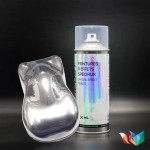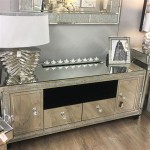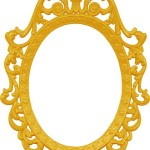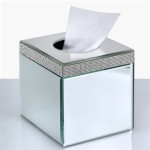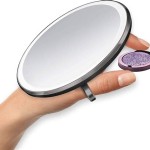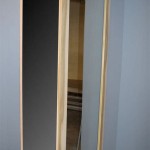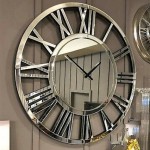How Can You Tell If a Mirror Has Mercury In It?
Mirrors have been an essential part of human life for centuries, reflecting our images and offering a glimpse into our appearance. While modern mirrors primarily use silver as a reflective coating, older mirrors, particularly those manufactured before the mid-20th century, often contained mercury. Mercury, a highly toxic substance, was once a common ingredient in mirror manufacturing, but its use has been largely discontinued due to its health risks. If you own an antique mirror or are curious about the composition of a vintage piece, understanding how to identify the presence of mercury is crucial for safety and proper handling.
Visual Inspection
While a visual inspection alone cannot definitively confirm the presence of mercury, it can provide some clues. Look for the following characteristics in your mirror:
- Age: Mirrors manufactured before the mid-20th century are more likely to contain mercury. If your mirror dates back to the 19th century or earlier, it is a stronger indicator of mercury usage.
- Backside Appearance: Mercury mirrors often exhibit a distinctive backside appearance. The reflective coating may appear as a thin, silvery layer, sometimes with a slightly oily or metallic sheen. Look for any signs of discoloration, oxidation, or flaking behind the glass.
- Frame Design: Antique mirrors might feature elaborate frames that were designed to conceal the backside of the mirror, possibly due to concerns about the appearance or potential hazards of mercury. This doesn't definitively indicate mercury, but it could be a clue.
It's important to note that these visual cues are not foolproof. Modern mirrors may also exhibit similar characteristics, and not all antique mirrors contain mercury. A visual inspection should be considered a preliminary step in determining if further investigation is warranted.
Chemical Testing
If visual inspection raises concerns about the presence of mercury, more conclusive methods of testing are available. These methods typically involve the use of specialized equipment and expertise, potentially requiring the assistance of a professional.
- X-Ray Fluorescence (XRF) Analysis: XRF analysis is a non-destructive technique that uses X-rays to identify the elements present in a material. This method can detect the presence of mercury in a mirror, even in small quantities, without damaging the mirror itself.
- Mercury Vapor Analyzer: If you suspect the mirror is releasing mercury vapor into the air, a mercury vapor analyzer can be used to detect the presence of mercury in the surrounding environment. This method is particularly useful for evaluating safety in a space where an antique mirror is located.
- Laboratory Analysis: A laboratory analysis is another option for determining the presence of mercury. This method involves taking a small sample of the mirror's reflective coating and analyzing it using techniques such as atomic absorption spectroscopy or inductively coupled plasma mass spectrometry. These tests can provide an accurate and detailed analysis of the mirror's composition.
It's crucial to consult with qualified professionals, such as environmental consultants, materials analysis specialists, or conservators, for accurate chemical testing and interpretation of results.
Safety Precautions
If you suspect a mirror contains mercury, it's crucial to take precautions to minimize exposure and potential health risks. Mercury is a neurotoxin that can be absorbed through inhalation, skin contact, and ingestion. Here are some essential safety guidelines:
- Avoid Physical Contact: Do not touch, rub, or scratch the surface of the mirror if you suspect it contains mercury. The coating may flake or break, releasing mercury particles.
- Proper Ventilation: Ensure adequate ventilation in the area where the mirror is located, especially if you are cleaning or handling it. Open windows and doors to allow fresh air circulation.
- Protective Gear: Wear gloves and a mask when handling the mirror. Avoid direct contact with the reflective surface.
- Professional Disposal: If you confirm the presence of mercury, seek professional assistance for its safe removal and disposal. Mercury should not be disposed of in household trash or plumbing systems. Consult your local environmental agency or hazardous waste management services for proper disposal guidelines.
It's important to note that the health risks associated with mercury exposure depend on the amount and duration of contact. While brief exposure to small amounts of mercury may not pose a significant health threat, prolonged or frequent exposure can have serious consequences. If you experience any symptoms such as headaches, fatigue, irritability, or memory problems, seek medical attention immediately and inform the physician about potential mercury exposure.

Is Your Looking Glass Showing Age Twin Cities Bungalow Club

Is Your Looking Glass Showing Age Twin Cities Bungalow Club

Is Your Looking Glass Showing Age Twin Cities Bungalow Club

Mercury Mirror

Mercury Mirror

Mercury Mirror

How Do I Know If My Mirror Is Antique

Deslivering 101 What Causes Dark Edges Around Mirrors Glass Com

Mercury Mirror
How To Know If There S A Fake Mirror Quora

